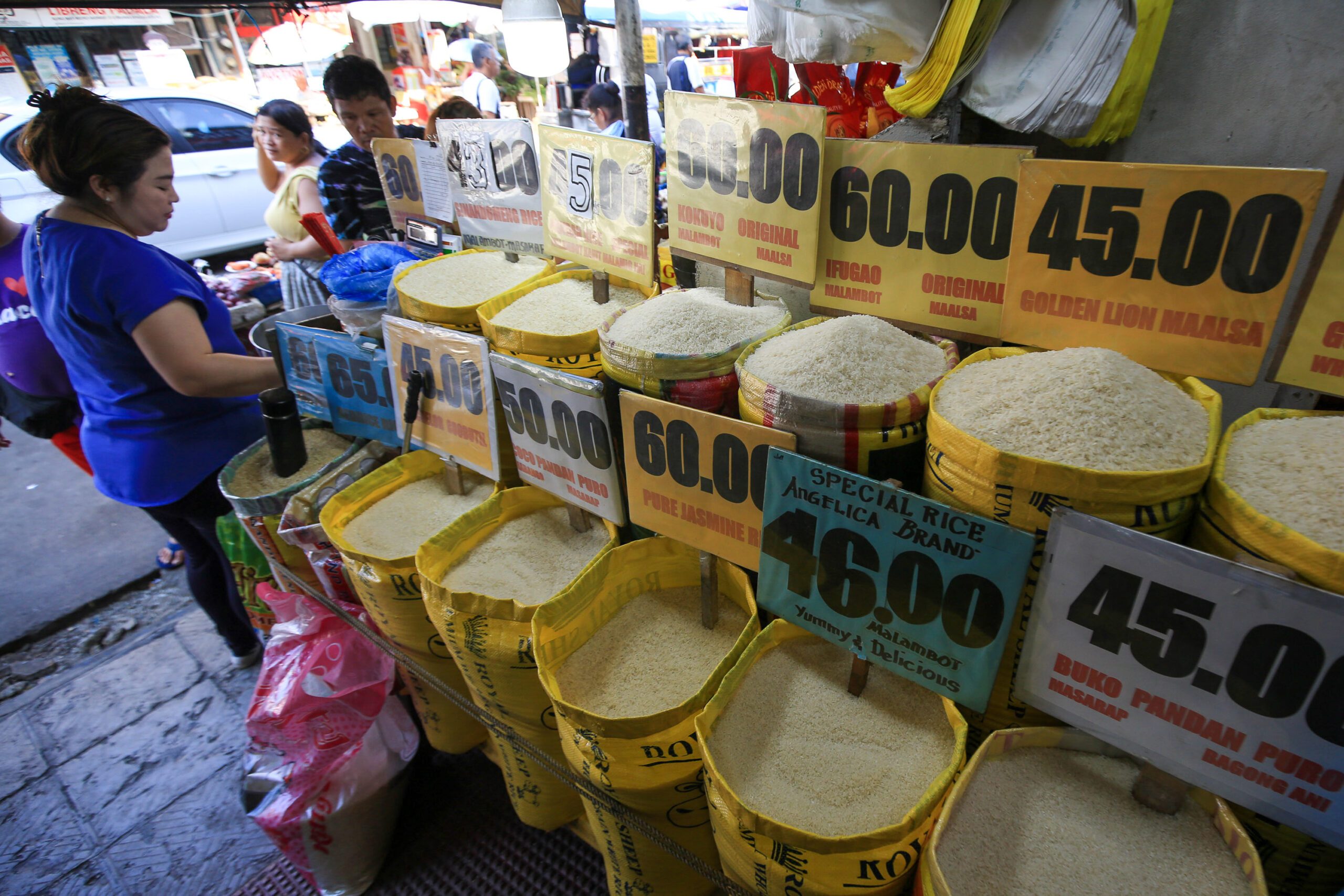SUMMARY
This is AI generated summarization, which may have errors. For context, always refer to the full article.

MANILA, Philippines – Headline inflation jumped to 5.3% in August as rice and fuel prices rose during the period, the Philippine Statistics Authority (PSA) reported on Tuesday, September 5.
The latest figure is higher than the 4.7% recorded last July, ending the six straight months of deceleration.
Year-to-date, inflation is at 6.6%.
The Bangko Sentral ng Pilipinas (BSP) is aiming for the inflation rate to settle between 2% to 4%. It earlier projected that inflation would settle between 4.8% to 5.6% in August.
Rice inflation increased to 8.7% in August from 4.2% in July, as the reduction in rice production due to El Niño and the export ban recently imposed by major rice exporters like India and Myanmar led to higher international rice prices.
Vegetable inflation rose to 31.9% from 21.8% due to production losses from enhanced monsoon rains and Super Typhoon Egay.
In August, oil companies raised diesel prices by almost P10 and gasoline by almost P6.
Meanwhile, the LRT raised fares during the month. For both the LRT1 and LRT2, single journey ticket minimum fares were raised to P15 while maximum fares have gone up as high as P35.
The PSA released the latest inflation figures on the first day of the implementation of President Ferdinand Marcos Jr.’s order setting a price cap on rice. Economists, however, warned that a price cap would lead to supply constraints, hurting both consumers and farmers.
Careful calibration
Finance Secretary Benjamin Diokno said that price controls are effective in the near-term “when carefully calibrated and closely implemented.”
“However, the government recognizes its adverse impact on rice retailers and farmers. It is crucial that the government ensures sufficient rice supply at reduced prices, avoids non-competitive behavior in the rice industry, and pursues targeted programs to protect vulnerable sectors,” Diokno said.
Meanwhile, Ibon Foundation executive director Sonny Africa slammed Marcos’ price cap, calling it “a mere show of action to try and stem growing discontent” with rising inflation.
“A competent agriculture secretary is needed to stop food inflation from worsening. The replacement also shouldn’t be blinded by free market dogma and should understand the importance of really protecting and supporting Filipino farmers,” Africa said.
In an emailed statement, National Economic and Development Authority Secretary Arsenio Balisacan called for a review of existing rice tariff levels to lower the cost for consumers. Deputy Speaker Ralph Recto had made a similar call in the House of Representatives.
“To partially counterbalance the rise in global prices and alleviate the impact on consumers and households, we may implement a temporary and calibrated reduction in tariffs,” Balisacan said.
NEDA said that alleged hoarding and artificial shortage may have put further upward pressure on domestic retail prices of rice.
Balisacan urged government agencies to accelerate the Food Stamp Program (FSP) rollout. The FSP is one of the priority programs of the Department of Social Welfare and Development, which will provide P3,000 worth of food credits to target beneficiaries each month for six months. – Rappler.com
Add a comment
How does this make you feel?
![[EDITORIAL] Apat na taon na lang Ginoong Marcos, ‘di na puwede ang papetiks-petiks](https://www.rappler.com/tachyon/2024/07/animated-bongbong-marcos-2024-sona-day-carousel.jpg?resize=257%2C257&crop=280px%2C0px%2C720px%2C720px)
![[In This Economy] Delulunomics: Kailan magiging upper-middle income country ang Pilipinas?](https://www.rappler.com/tachyon/2024/07/in-this-economy-upper-middle-income-country.jpg?resize=257%2C257&crop=421px%2C0px%2C1080px%2C1080px)

![[EDITORIAL] Marcos Year 2: Hilong-talilong](https://www.rappler.com/tachyon/2024/07/animated-bongbong-marcos-2nd-sona-carousel.jpg?resize=257%2C257&crop=136px%2C0px%2C720px%2C720px)
![[Newspoint] A fighting presence](https://www.rappler.com/tachyon/2024/07/thought-leaders-a-fighting-presence.jpg?resize=257%2C257&crop=441px%2C0px%2C1080px%2C1080px)
There are no comments yet. Add your comment to start the conversation.